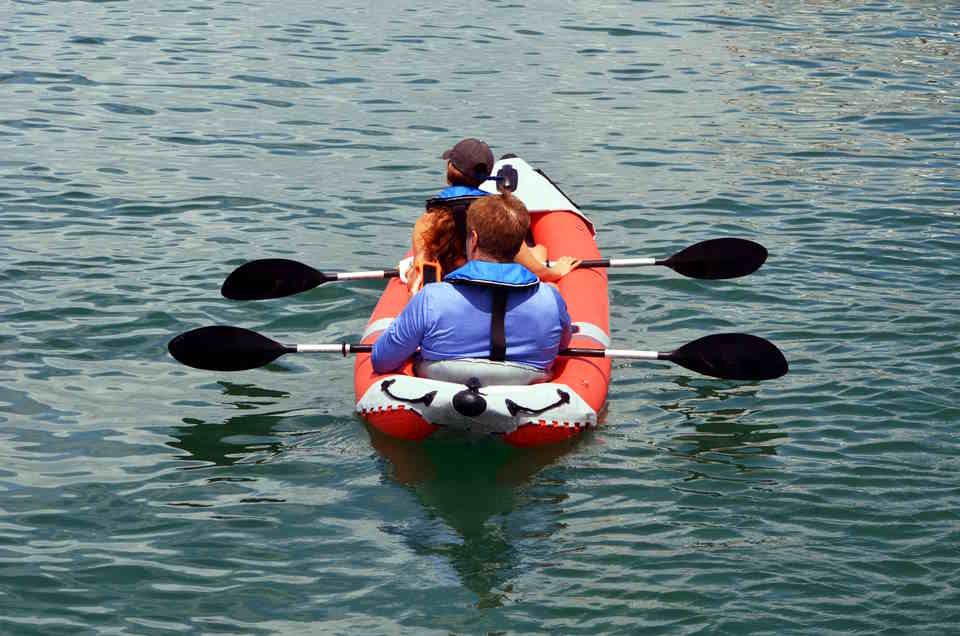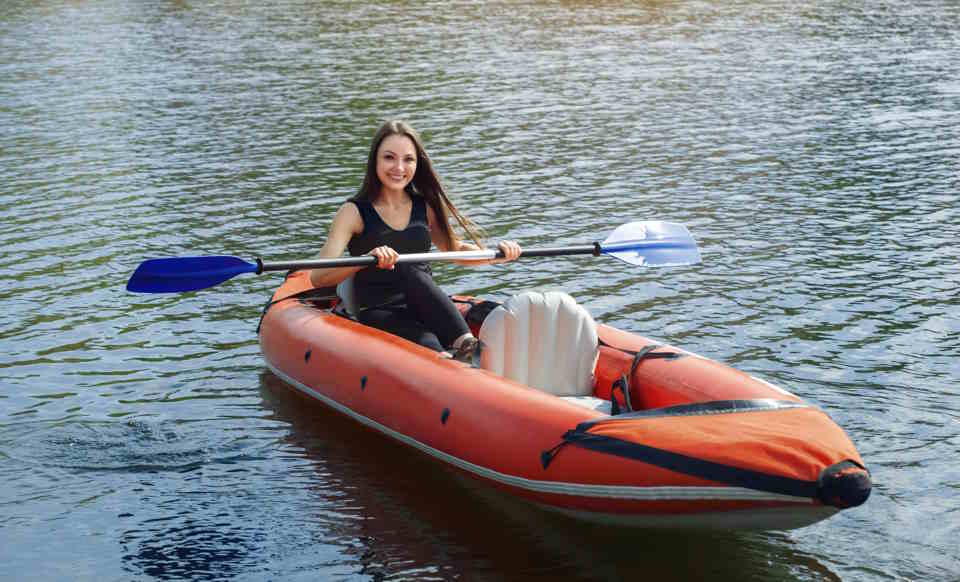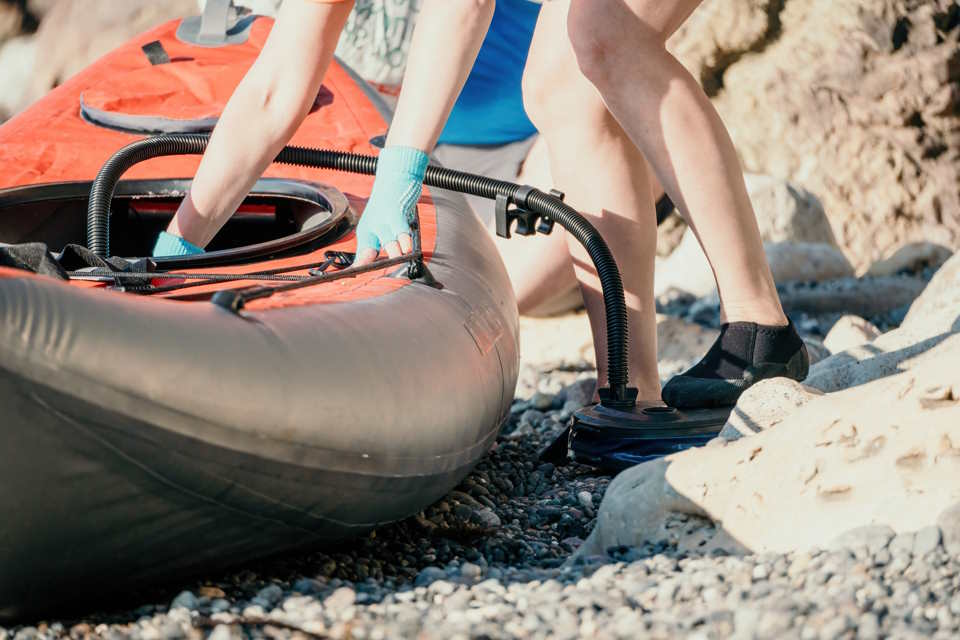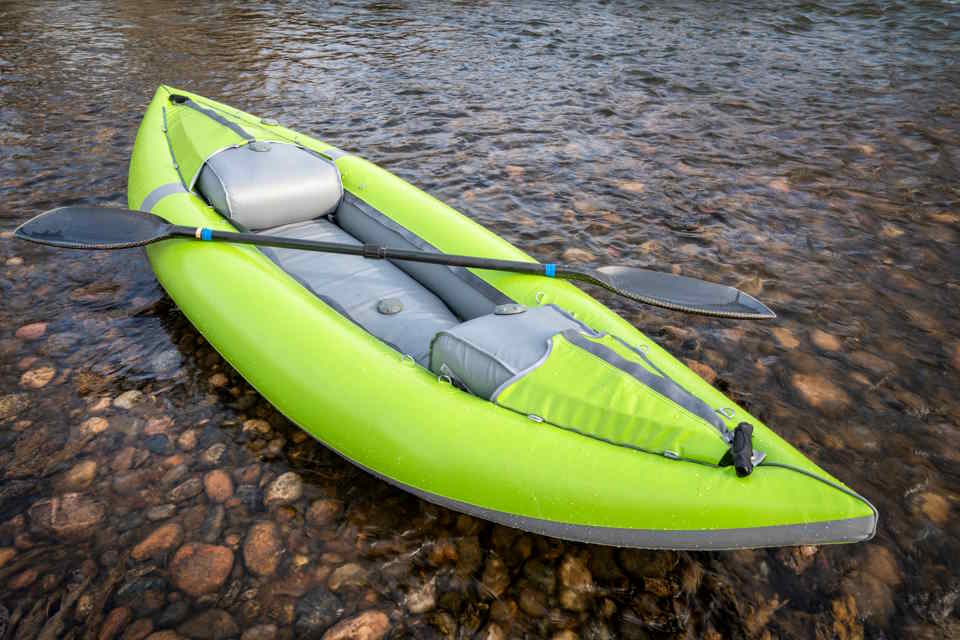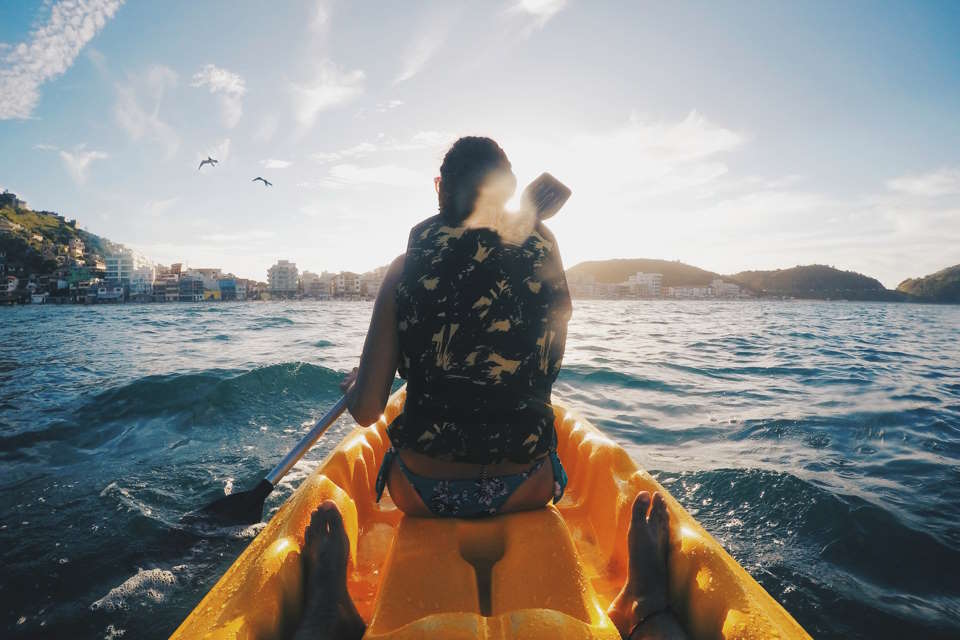Welcome to our blog post on the importance of Leave No Trace principles in outdoor activities. We will explore how understanding these principles can help minimize our impact on the environment and ensure the preservation of natural resources. We will delve into the proper ways to dispose of waste, the significance of respecting wildlife from a distance, and the responsibility we have in maintaining clean waterways, specifically through responsible kayak maintenance. Join us as we discuss the vital role we all play in preserving and protecting our precious outdoor spaces.
Understanding Leave No Trace Principles
Are you a nature enthusiast who loves spending time outdoors? Whether you enjoy hiking, camping, or kayaking, it’s important to understand and embrace the Leave No Trace principles. These guidelines were established to help maintain the integrity of our natural environment and ensure that future generations can enjoy the beauty of nature too. So, let’s dive into the world of Leave No Trace and discover how we can minimize our impact while enjoying the great outdoors.
Leave No Trace is a set of outdoor ethics that promotes responsible behavior and stewardship. The principles aim to reduce human impact on the environment, wildlife, and other visitors. The first principle is to plan ahead and prepare. This means researching the area you’re visiting, knowing the regulations, and bringing the necessary gear. By being well-prepared, you can ensure a safe and enjoyable experience while leaving minimal impact.
Another important principle is to dispose of waste properly. This includes human waste, trash, and even food scraps. When hiking or camping, always carry a small bag to collect any trash you might generate along the way. Additionally, if there are no toilets available, make sure to dig a small hole at least 200 feet away from any water sources and bury your waste properly. This not only helps to keep the environment clean but also prevents the spread of diseases.
The principle of minimizing campfire impact is also crucial when it comes to Leave No Trace. Campfires can be enjoyable, but they also have the potential to cause significant damage to the environment, especially in dry areas. Before starting a fire, ensure that it’s allowed and follow any specific regulations in place. Always use designated fire rings or fire pits and make sure to fully extinguish the fire before leaving your campsite.
As a responsible adventurer, it’s important to remember that the Leave No Trace principles go beyond just picking up trash and extinguishing fires. It also involves respecting wildlife and their natural habitats. Observing from a distance and refraining from feeding or approaching wild animals helps to protect their well-being and ensures that they can continue living undisturbed in their natural habitats.
| Leave No Trace Principles | Summary |
|---|---|
| Plan ahead and prepare | Research and be prepared before heading out. Follow regulations and bring necessary gear. |
| Dispose of waste properly | Carefully collect and dispose of trash, human waste, and food scraps to minimize environmental impact. |
| Minimize campfire impact | Follow fire regulations, use designated fire rings, and fully extinguish fires before leaving the campsite. |
| Respect wildlife | Observe wildlife from a distance, refrain from feeding, and avoid approaching wild animals. |
Minimizing Impact: Proper Waste Disposal
Kayaking is a thrilling adventure that allows you to soak in the beauty of nature while gliding across crystal-clear waters. But as responsible outdoor enthusiasts, it’s important for us to understand the principles of Leave No Trace and make a conscious effort to minimize our impact on the environment. One crucial aspect of this is proper waste disposal.
When embarking on a kayaking expedition, it’s essential to pack all your supplies in a way that minimizes waste generation. Opt for reusable containers and water bottles instead of single-use plastic ones. This not only reduces the amount of trash you accumulate but also helps in preserving natural resources.
Proper waste disposal while kayaking is more than just throwing your trash into a designated bin. It involves practicing the “pack it in, pack it out” principle, which means whatever you bring with you, take it back. This includes not only food wrappers or empty water bottles but also any other waste that you may generate during your kayaking trip.
- Carry a small, portable garbage bag or trash container with you in your kayak.
- Make sure to secure it properly, so it doesn’t accidentally fall overboard.
- Dispose of your waste responsibly when you find an appropriate trash receptacle or recycling facility.
| Items to pack for waste disposal: |
|---|
| 1. Trash bags or containers |
| 2. Ziplock bags for sorting and containing your waste |
| 3. Disposable gloves for handling waste |
| 4. Biodegradable soap for washing dishes or utensils |
Preserving Natural Resources: Leave No Trace Camping
When it comes to enjoying the great outdoors, camping is an activity that is loved by many. There’s nothing quite like breathing in the fresh air, sitting around a campfire, and sleeping under the stars. However, it is important to ensure that our camping activities have minimal impact on the natural resources around us. This is where Leave No Trace principles come into play.
Leave No Trace is an outdoor ethics program designed to promote and inspire responsible outdoor recreation. It provides guidelines on how to minimize our impact on the environment while enjoying outdoor activities. Let’s take a look at how these principles can be applied to camping and preserving natural resources.
The first principle of Leave No Trace camping is to plan ahead and prepare. This means doing your research beforehand to identify the rules and regulations of the area you plan to camp in. It’s important to know if camping is even allowed in the region and what restrictions may be in place. By planning ahead, you can ensure that you have the necessary permits and follow any specific guidelines set forth by the authorities.
- Minimizing Impact: Proper Waste Disposal
One of the most important aspects of Leave No Trace camping is proper waste disposal. The second principle emphasizes the importance of packing out all your trash and garbage. This includes not only food wrappers and packaging but also any other waste generated during your camping trip. By carrying a garbage bag with you and properly disposing of it when you leave the campsite, you can prevent litter from polluting the natural environment and harming wildlife.
Additionally, a key practice to adopt is to pack out human waste. This means bringing along a portable toilet or using designated facilities provided by the campsite. If these options are not available, it is important to dig catholes at least 200 feet away from water sources, trails, and campsites. This helps to prevent contamination of waterways and maintains the overall integrity of the environment.
| Respecting Wildlife: Observing From A Distance |
|---|
While camping, it is common to come across various forms of wildlife. From birds chirping in the trees to deer grazing in the meadows, encountering wildlife can add to the excitement of your camping experience. However, it is crucial to remember that we are visitors in their home, and it is important to observe them from a distance.
The fourth principle of Leave No Trace camping is to respect wildlife. Getting too close or feeding animals can disrupt their natural behavior and even pose a threat to their well-being. It’s important to use binoculars or a zoom lens to admire wildlife from afar, ensuring that we do not disturb their habitat or contribute to altering their natural patterns.
By adopting these and other Leave No Trace principles, we can enjoy our camping adventures while preserving the natural resources for future generations. Let’s make a conscious effort to minimize our impact on the environment and leave behind only footprints, taking memories and leaving no trace.
Respecting Wildlife: Observing From A Distance
Kayaking is an exhilarating activity that allows you to get up close and personal with the beauty of nature. Whether you’re paddling through calm rivers or tackling the thrills of white-water rapids, there’s always something awe-inspiring about being out on the water. However, it’s important to remember that while we may be enjoying the experience, we are just visitors in the wild habitats of various wildlife species. This means we must treat their space with respect and observe them from a distance to ensure their wellbeing. We will delve into the importance of respecting wildlife while kayaking and the ways in which we can achieve this.
First and foremost, it’s crucial to understand that wildlife exists in their natural habitats for a reason. They have adapted to their surroundings and rely on them for survival. When we intrude too closely or disturb their environment, we can disrupt their natural behaviors and even cause long-term damage to their populations. While it can be tempting to get a closer look or snap a better photo, it’s essential to resist the urge and remember that we are mere guests in their homes. By observing from a distance, we allow them to go about their daily lives without disturbance.
One of the best ways to ensure we respect wildlife while kayaking is to familiarize ourselves with the specific species we are likely to encounter. Knowing their behaviors, habitats, and seasonal patterns can help us avoid unintentional disruptions. For example, if we are aware that a particular bird is nesting during a certain time, we can steer clear of their nesting sites to avoid any harm or distress. This knowledge also helps us appreciate their natural behaviors from afar, allowing us to enjoy the beauty of the animal kingdom.
Another important aspect of respecting wildlife is to refrain from feeding them or leaving any food items behind. While it may seem harmless to toss a few breadcrumbs to a passing bird, habituating wild animals to human food can have severe consequences. They can become dependent on handouts and lose their natural hunting or foraging instincts. This can lead to imbalances in the ecosystem and even aggressive behaviors towards humans. So, it’s essential to be responsible and avoid any form of feeding or leaving food waste behind.
| Do’s | Don’ts |
|---|---|
| Observe wildlife from a safe distance | Approach wildlife too closely |
| Stay on designated waterways and paths | Disturb nesting or breeding sites |
| Learn about the species you are likely to encounter | Feed wildlife or leave food behind |
| Capture unforgettable wildlife moments through photos | Use flash photography that can startle animals |
Lastly, we must be mindful of our actions and the impact they can have on the delicate ecosystems. Even something seemingly harmless, like using flash photography, can disturb or startle wildlife. Therefore, we should always be cautious and avoid doing anything that may disrupt their natural behaviors. By following these simple guidelines and being responsible kayakers, we can ensure we leave no trace and protect the precious wildlife we encounter during our adventures.
Ensuring Clean Waterways: Responsible Kayak Maintenance
Do you love kayaking? There’s nothing quite like the feeling of gliding through calm, crystal-clear waters, surrounded by nature’s beauty. But did you know that as kayakers, we have a responsibility to ensure that our waterways stay clean and pristine? That’s where responsible kayak maintenance comes in. By taking a few simple steps, we can do our part to keep our waterways healthy and enjoyable for years to come.
One of the most important aspects of responsible kayak maintenance is cleaning. After each kayaking trip, it’s crucial to give your kayak a thorough cleaning. This not only helps to remove any dirt, debris, or aquatic invasive species that may have hitched a ride, but it also prolongs the life of your kayak. Use a gentle soap, warm water, and a soft brush or sponge to clean both the interior and exterior of your kayak. Rinse it thoroughly and allow it to dry completely before storing it.
Inspecting your kayak regularly is another crucial part of responsible kayak maintenance. Before heading out on a new adventure, take the time to inspect your kayak for any signs of wear and tear. Check for any cracks, dents, or loose fittings. If you notice any damage, make sure to repair or replace the affected parts before hitting the water. This not only ensures your safety but also helps to prevent any pollutants or debris from entering the water.
| Responsible Kayak Maintenance Checklist: |
|---|
| 1. Clean your kayak thoroughly after each trip. |
| 2. Inspect your kayak for any signs of damage before each outing. |
| 3. Store your kayak properly when not in use. |
| 4. Use eco-friendly cleaning products to minimize environmental impact. |
| 5. Dispose of any waste responsibly, both on land and in the water. |
Last but not least, proper storage of your kayak is essential for its longevity and the cleanliness of waterways. When not in use, store your kayak in a dry and secure location, away from direct sunlight and extreme temperatures. This will help prevent any damage caused by weather exposure and keep your kayak in top shape for future adventures.
By following these responsible kayak maintenance practices, we can all play a part in ensuring clean waterways for ourselves and future generations of kayakers. So let’s paddle responsibly and leave a positive impact on the beautiful world we love to explore!

